|
Score: 95+/100 (9.5+ out of 10)
The perfect Halloween children's book does exist! When it comes to finding a Halloween book that hits on all cylinders and does everything right, look no further than Witches, Bats, and Mystical Cats by Julie Chapman! It is a beautifully written and well-illustrated children's book that not only excels as a children's book but also as a seasonal book, holiday book, and poetry book as well! In fact, this book contains some of the best and most enjoyable poems of the entire season. That's saying a lot! Julie Chapman is truly a masterful writer, you can really tell. When it comes to writing poems that are grammatically and structurally sound, she's got it. She just gets it. She has the it factor as a poet. The writing is exceptional! Her poems are upbeat, fun, and enjoyable. Some of them are even educational! For example, did you know that jack-o-lanterns were intended to ward off the spirits of the dead? So, they actually served a protective purpose. We didn't! Did you know that black cats gained their bad reputation by being wrongly associated with evil witches? We didn't! Did you know that Candy Corn was invented in the 1800s as chicken feed? We didn't! This book actually teaches you and your children about Halloween, and it does it with some of the best, funnest, most clever rhymes we've ever seen! This book constantly reminds children that even though Halloween might be a bit creepy, weird, and even scary, it's all in good fun. Page 18 has one of our favorite illustrations of this as it shows people dressed in creepy, weird, scary, and cool costumes just dancing and having a great time at a Halloween party. Now, there are a few poems in here that are legitimately creepy. There's a story in here about a haunted house in the neighborhood that was sold off by a widow. The soul of her husband who'd fallen down the stairs to his death still wanders the home, unwilling or unable to move on. What's incredible is that even though this story is a bit scary, it also garners you some sympathy for the ghost. The book even speculates if someone or something might be able to help the ghost of the old man to move on. There's also an outright creepy poem about a vampire/Dracula accompanied by a somewhat haunting image of him scaring away some young trick-or-treaters with piercing red eyes and big, long fangs while inconspicuously holding a bowl of candy. Other legitimately scary parts include one about the wind through the trees being signs of the presence of the souls of the dead and another about a werewolf. Again, the book still leaves room for parents and teachers to remind their children/students that these are fantasy stories and that it's all for fun. That doesn't mean they can't potential incite some nightmares, but that's what scary stories are for after all. This book maintains a very upbeat and positive tone even when you go through those more unsettling parts. For example, you can always try to find the cool, cute, and comforting black cat throughout the book. Children might enjoy doing that. They might also enjoy identifying all the different costumes such as the ones on page 6. Maybe they can even debate on which costume the character should choose. There are also some interesting moral lessons to be taught in this book. For example, one part invites children to cast a “spell” which is really just making a wish on a piece of wood. They are encouraged to only ask for good. There's another poem that reflects on being grateful to mother nature, seeing how fleeting and valuable that is with the changing season. There's yet another part that educates us to treat all living creatures, even black cats, with love and appreciation regardless of their reputation or color because they come “from above.” Another encourages children to count their blessings and to show gratitude. The illustrations are pretty good too, although we do think there was a drop in quality due to some sort of conversion issue. We can easily forgive that. The main thing is that we can see the effort that went into them. All in all, this is just about the perfect children's Halloween book! Check it out on Amazon!
0 Comments
Score: 89/100 (8.9 out of 10)
Stone Garden is another wonderful addition to author Tuula Pere's line of children's books. She has proven to be one of our most prolific children's authors by far. This book really embodies Tuula Pere's signature style. True to form, it has a darker, more gothic, fantastical look and feel similar to her earlier hit, The Only Blue Crow. It is similar to the works of Tim Burton or something like Where the Wild Things Are by Maurice Sendak, and that's a good thing. This is another example of a book that encourages children to use their imagination and to think bigger and broader about things. This book also teaches the age-old yet important lesson of learning to treat people the way that you want to be treated. This book follows two siblings, Lina and Nico, as they discover a mysterious garden filled with morbid statues. The statue that sticks out to them the most is one of a grumpy old man. Nico is initially scared of the statue, but Lina is able to calm his fears by encouraging him to reframe his thinking about the statue. She reframes the statue in the context of a story that their grandma had told them about a grumpy old man. The grumpy old man was mean and rude to people, then when his birthday came, he held a party expecting people to be impressed by the extravagant garden he owned. As expected, no one attended his party because of the way he had treated them. The grumpy old man became so depressed, he retreated into himself and turned to stone. Something really great about this book is that children really can pick up some great lessons. For example, they can empathize with the way that Nico feels about the scary statue. The statue is, in fact, a bit unsettling like many things in life. Lina teaches readers that they can reframe something scary by putting them into a new context, in a different light, and coming to a better understanding of the thing that they're scared of. For example, if you're scared of spiders, maybe it could help to read and learn more about spiders, learning that they're just living creatures like we are. They want to eat like we do. If a child is scared of the dark, maybe they can come to an understanding that light and dark aren't magical, they're just parts of nature just like we are. Maybe if a child is afraid of showering, they can reframe it as being not much different than rain, something they might find cool or interesting. Another more obvious lesson that children will take away from this book is to learn to treat people they want to be treated. You get that lesson from looking at the grumpy old man who drives people away with the way he treats them. The book also teaches children that being rich, famous, successful, or having nice things (like a fancy garden) isn't a replacement for being a good person. Something else that's beautiful about this story is that the grumpy old man does have a bit of a redemption arc. He initially keeps little blue birds in cages with him because they're the only “friends” who'll stay with him and sing to him. However, they stop singing when he keeps them in cages for too long and won't let them go. The old man eventually realizes that he needs to start treating people and animals better, so he lets them go. Because of this act of kindness, the birds come to visit him and sing to him. It's quite sweet. This shows children that people/friends are more likely to stick around and remain friends if you're good and kind to them. The only real issues with this book are that it's a little bit wordy, so it may test younger attention spans, and that the illustrations aren't nearly as impressive as something like The Only Blue Crow or Treehouse Night. The art is much more like Do You See Me When We Travel? The art does have a bit of a character and charm of its own. There are times when the lines and colors really blend and mix well together, almost becoming one. All in all, Stone Garden is definitely worth a look. Check it out on Amazon! Score 94/100 (9.4 out of 10)
Dragon's Breath is a magnificently illustrated, fanciful, and unique story by Dr. Dawn Menge! This wonderful book welcomes readers to the Kingdom of Quails, a beautiful kingdom where the people thrive and treat each other with care. It is ruled by the loving power couple of King Teddy and Queen Giggles. Life is good in the Kingdom of Quails until, one day, a malevolent and manipulative dragon visits it. The dragon proves to be a pathological liar, getting everyone in the kingdom to believe, trust, and follow her despite her ill intentions. Even King Teddy and Queen Giggles fall for her lies. The dragon's defining characteristic seems to be her jealousy as she becomes jealous of the happiness that King Teddy and Queen Giggles have for one another. She seems to have some degree of affection for Teddy, almost like a jealous ex-girlfriend, and resents the fact that he loves Giggles. This prompts the dragon, who lacks the ability to breathe fire, to blanket the kingdom with the smoke she breathes, causing all of the crops to fail and hurting the very people she earlier pretended to be friends with. This book is incredible in a lot of ways. The main thing that stuck out to us immediately is that the art is superb. It's phenomenal! We'd recently seen a professionally, traditionally-published take on the Beauty and the Beast story, and this book—which we presume to be independently-published—looks just as good if not better! This is made all the more incredible since it's such a huge step forward from the illustrations in the previous book by the same author. Just about everything in this book looks top-notch and incredible. The only thing that looks a little off sometimes is the dragon herself, who appears to have a receding hairline, but that might be intentional and actually might serve the purpose of showing some of her motivations and insecurities. The dragon, in a lot of ways, is meant to reflect a woman slighted, so her appearance fits. It's just something you notice right away and it does kinda bother you initially just simply because of how different it is. The other two stars of the book, King Teddy and Queen Giggles, look handsome and gorgeous respectively. Scratch that, they look drop-dead handsome and drop-dead gorgeous. They both might be in the running for “Hottest Character.” Heck, even the peasants look great! That's always saying something when the side characters—NPCs—who don't even have names are made to look incredible. This book really only has a few weaknesses. Unfortunately, most of those have to do with the writing. That's a little bit of a bummer considering that it's very short, so any errors could've and should've been caught by one or two little proofreads and revisions. One thing that jumps out is the improper or inconsistent use of capitalization for things like “Kingdom of Quails” or “kingdom of Quails.” There's also some wrong-word usage such as when King Teddy uses the word “vanquished” instead of “banished” (which he clearly intended to say based on what happens afterward). However, these things are easy enough to overlook, especially if you're going to be reading this aloud to your kids or students. They're probably not going to care about or even notice these grammatical things. In closing, we wanted to talk briefly about the themes. This book may be useful in exposing kids to the dangers of emotions like jealousy, envy, covetousness, and resentment. You see the consequences of acting on those emotions. Children, especially around the age of two or three, can be very self-centered. Everything is “me, me, me” and “mine, mine, mine.” They often get into conflict with each other over who gets to play with a toy first (or longer). They are also upset when other children get more attention than they do. That's just something that seems normal when you consider that a kid that age is someone very small and the world seems so big and out of their control. They cling to whatever control they can get. It may be a good idea, however, to still discuss with children that things like jealousy and greediness can be very destructive. It's a good way to lose friends, not gain them. It's a good way to push people away instead of pulling them closer. It is very possible that the reader may feel some sympathy or even empathy for the villainous dragon, and that's fine. She's not pure evil. In fact, her motivations, as we mentioned, are understandable. Perhaps you can have fun talking to your kids about the changes the dragon went on to make in her life to improve her relationships with people. All in all, we can definitely recommend this book for children. Check it out on Amazon! Score: 92/100 (9.2 out of 10)
The Treehouse Night by Tuula Pere is a fabulous and rather unique children's book that explores the topics of friendship, hard-work, commitment to a project, taking calculated risks, and setting goals. It's actually a bit like Ronnie's Pool by Linday Ann Fink in that regard. The characters, likewise, come together to accomplish a huge task with several bumps and hurdles along the way. The characters wrestle with self-doubt, conflicts in their relationship, and tension with parents/family regarding certain plans. It might sound like Disney princess stuff, and it sorta is, but it's presented rather uniquely in this book. For one, there's kinda a darker and more mature tone to this book. No, there's nothing inappropriate or violent, but there's a sense that the characters really are taking risks that could land them in trouble. What if Emma's treehouse does fall apart with her in it and she gets hurt? What if this conflict and building dispute between Emma and Oliver is so severe that they never want to speak or play together again? What if Emma gets in trouble with her parents for pretty much disobeying them? What if Emma and Oliver are misconstrued as, well, being together alone in a treehouse at night? It sounds like an odd consideration, but there is some tension between the two characters of opposite genders, which is quite cute but also leads to the possibility of something foreboding. It's not like Disney movies don't feature child and teenage characters who develop crushes on one another. They are portrayed as being on the older side, although they're still in school. They are probably between 12-16 years-old, so girlfriend/boyfriend talk isn't entirely out of the question. It's actually somewhat cute to see, especially granted that they are also of different races. They would be, in that regard, a multiracial couple. They are, at the very least, multiracial friends. Another thing that we love to see with this book is that the art is a huge step up from Do You See Me When We Travel? by the same author. The art is actually quite nice. The human characters and the environments are well drawn and colored. They are definitely crafted in an appealing way. We were especially impressed by the budding flowers in the tree and the cricket near the end. The writing is also a huge step up. Instead of the paragraphs being scattered around the page like the last book, the paragraphs in this book are neatly organized and very easy to read. It actually might be fun for one child to read Oliver's lines and the other to read Emma's. Most of this book is dialogue between two people. This book also has quite a satisfying ending, something that a lot of reviewers seemed to have an issue with in regards to The Only Blue Crow by the same author. This book actually feels like it has a conclusion. Now, The Only Blue Crow did have superior art and, arguably, a more interesting premise aided by superior writing. However, this book is still great and special in its own way. Check it out on Amazon! Score: 84/100 (8.4 out of 10)
Do You See Me When We Travel? is another cozy little children's book by one of our most prolific children's authors, Tuula Pere! This particular book focuses on the feeling of being lost in the chaos and shuffle of a wild day out. This is a familiar feeling for people of all ages, especially children. Children may not fully understand why their parents and families go to or take them to places like the market, the zoo, the carnival, or to get-togethers. The meaning and spectacle behind these things might be lost on them. They might even feel lost or even forgotten. One thing about Tuula Pere children's books is that they can shine light on otherwise dark or depressing subjects related to children. The truth is, life isn't all sunshine and rainbows for children. Kids go through tough times too, sometimes even tougher times than adults as they are smaller and more vulnerable with less agency. They sometimes feel sad, lonely, or even lost and abandoned. While this book doesn't dig too deeply into that darkness, it still explores it from the surface. The unnamed main protagonist in this book is a little boy who is on a trip with his mom. Everything is big, loud, and confusing for him, except for maybe the playground—his safe place. This is very relatable. Even we're afraid to cross the street sometimes when it's busy or when cars appear to be speeding. Sometimes, it's nice to have someone hold your hand and guide you through a scary, busy, confusing situation. The boy is confused as adults, towering over him like giraffes, have conversations that he doesn't understand and doesn't feel a part of. They visit the toy museum, where the boy can feel more in his element, and have a bite to eat. However, the food on the menu is foreign and confusing to him as well. He is assuaged with some familiar snacks. This book does a really good job at exploring the anxieties of being a kid in an unfamiliar place and situation. The only real critiques we have are that the art is nowhere near the quality or complexity of others we've seen recently (including the author's own The Only Blue Crow) and that it skips around a lot. It can be a little challenging to read since the text flies from one part of the page to the next, and situations change drastically and abruptly for the characters. We can understand that this captures the feeling of the character, but it can be jarring for the reader, especially a young reader going through this book for the first or second time. Otherwise, this book really is harmless and has a really unique charm with a really important message exploring themes of security and familiarity. You can find this on Amazon! Score 95+/100 (9.5+ out of 10)
Score: 89/100 (8.9 out of 10)
Who was your first pet growing up? Who was your favorite? Why did you choose them? Why did they choose you? Zoey Meets David is a cute little book about a boy (David), a family, and their new dog (Zoey). This book excels in some regards while struggling in others. At its core, it is a very charming book that covers an enticing subject matter for children and adults alike. Who doesn't love pet animals? Whether if it's a dog, a cat, a goldfish, or a hamster, pets can be major ways in which children learn nurturing and even responsibility. We can see this in moments like when David learns that puppies need leashes for their own safety. David also plays with Zoey, feeds her, and puts her to bed like father would a child. These moments are quite sweet if not utterly adorable. Another thing about this book that really shines is the artwork. The artwork is beautiful and charming, especially when it comes to Zoey. Zoey is illustrated in such a cute little way that you can't help but want to hug her. The human characters are also well illustrated, although they do veer close to the uncanny valley. It's very possible that the artist's instruction were to make them look as close to the real-life people as possible. We assume the artist succeeded because the people do look quite realistic. The art is bright, friendly, and inviting. There are a lot of smiles and a lot of things to smile about. More than likely, kids are going to flip through this book and simply admire the pictures while ignoring the writing, and that's fine. We did it as kids too. This book was clearly written for David (and, perhaps, the rest of the family), possibly as a holiday gift or to commemorate some event. This is the kind of book you write as a gift, not necessarily for public/commercial consumption, although it could do well in that regard. While the art and the subject matter are huge pluses in this book's favor, the glaring issue with this book is the writing. Beside how dialogue is handled, there aren't any grammatical issues that we noticed. It's something else. The way the story is written is very matter-of-fact and dry, almost like a doctor or a police officer writing a report. It's almost like, “Patient complained of increased pain and drowsiness. They were given 500 mg of _________, and __________ happened” or “the perpetrator was aggravated and says he threw the bottle in anger.” There's no real beat or rhythm to the writing. Parts of it feel disjointed. There are times there are huge blocks of texts in which multiple people are talking to each other. That's especially tough for a children's book since most children aren't looking forward to sit through a chapter book telling them the history of Italy, they need quicker, shorter, more rhythmic sentences and paragraphs. There are times we're just told that things happen, and there's no rhyme or reason to the sequence of events. For example, we first join the main characters while they're out eating pizza, then the book skips to the mother's interest in Chinese Crested puppies. We think we know why this is the case (because it actually happened that way), but as a story presented to an audience that doesn't know the family or the author, it feels jarring and unmoored. The other thing is: this book is supposed to be about David (and Zoey), but it seems pretty clear from the beginning that these types of dogs are the mother's interest. It almost feels like a parent making a book projecting their Olympic gymnastics dreams on their kid. While that's great for the parent, isn't this supposed to be about the kid? But we digress, because there are times when both David and Zoey shine as characters. Both are compelling in their own right and experience an arc. For David, this is a story about learning to be responsible for another living being. For Zoey, this is a story about how you need to kiss a few frogs before you find a prince. Zoey's story is particularly touching since she was a dog who was abandoned/returned multiple times and couldn't find a forever home for whatever reason. If that is the kind of story that appeals to you, we recommend you check out this book on Amazon! Score: 92/100 (9.2 out of 10)
Ring Fold by Scott Swisher is a fun time-traveling adventure starring a very strong female protagonist in Jordan and an interesting supporting cast including Rocco, Steffi, and Jacob. The book is fun, well-researched, and well-written. The story starts us off in a post-apocalyptic world that saw a series of earthquakes both literally and figuratively shake up the world. Amid this, it is discovered that several people are blessed (or cursed) with a special blood type that allows them to survive time travel—something the governments of the world and scientists find tantalizing. They seem to have brutally experimented on several subjects in an attempt to take and replicate their blood. Fearing this and fearing for their lives and safety, some of the gifted sent their kids to separate times in an effort to protect them. Jordan, a seemingly dying woman with this gift, is recruited by the mysterious Jacob and sent through time to recover four of these gifted people. And so the adventure begins... Although the plot is very similar to other stories, movies, and books we've gone through (like Season of the Swords by Domenic Melillo and Escaping the Future by Adam Cozier), the characters do make this book pretty extra special with their uniqueness. First of all, Jordan is a solid protagonist. She is strong, clever, and yet vulnerable. She is caring, compassionate, and conscientious without being a perfect angel or overly “soft.” In fact, “firm” and “staunch” might be good adjectives to describe Jordan. What's a little concerning about her character is how trusting and naive she can be. She doesn't really know what's really going on most of the time, which you might expect from a protagonist like this (not too dissimilar from Neo from The Matrix in a sense), but it's worrisome how little she stops to question things. For example, Jacob is constantly acting suspicious, shady, and sketchy, but Jordan just goes with whatever Jacob says, rarely questioning him. Yes, Jacob is charming and seems to be worthy of trust in that he knows what's going on, but would you really just drop what you were doing and follow Prince Charming into one timeline and then the next? Actually, scratch that, you probably would. Jordan comes armed with a fiery, spunky personality and a tremendous skill-set. She essentially learns kung-fu (or krav maga) the same way Neo did—by having it implanted into her. She's extremely proficient with weapons and fighting styles. Also, unlike some of the other characters, she seems almost perfectly immune to the effects of time-travel. Some of the best parts of this book are the side characters. Rocco is essentially Fonz from Happy Days--the coolest, most untouchable cat in town—an alpha-male in a biker jacket with perfectly greased-up hair. He is a product of his time. There's also Steffi, a ridiculously gorgeous blonde-haired, blue-eyed girl whose adventurous nature and social skills greatly complement Jordan's. There are times when Steffi has great ideas at solving a problem and times when Rocco has great ideas at solving a problem. Everyone has their time to shine—their chance in the spotlight. That's a very good thing we like to see in a book. There's also Carissa, who is supposed to be the most relatable character to Millennials and Generation Z. Her whole section seems to be a very thinly veiled social commentary about how the newer generation spends too much time on their smartphones and using technology rather than interacting socially. Even Steffi, the most socially-inclined character in the book, has problems connecting with Carissa initially due to this. Carissa also has her moments. Almost all of these side-characters have their obnoxious, over-played, over-acted moments, and it's bearable. It's not the biggest deal. It does sometimes make them seem comical or like cartoon characters. Only Steffi seems immune to this. She actually seems real most of the time. These protagonists are effectively opposed by the aptly-named Loretta Wretch. Loretta is essentially the primary antagonist of the novel, at least having the most direct interactions with the heroes. She is the equivalent to Agent Orange from ICDA by Andrew Zellgert or Agent Kruger from Elysium. She is a roguish and ruthless agent of the organization hunting down the Ring. She is an effective enough villain. The pacing does seem to slow down and we get some speed bumps along the road. Yes, we experience this even when flying from timeline to timeline. There are also times when the scenes just feel like they're out of old timepiece films. Certain songs and music are often used to give you the feeling that you're in a certain time, lyrics and all. Now, we have to admit, every single time we've seen song lyrics featured in a book this year, it has come across as contrived and cringy. It does help that some of the characters respond to this songs with nostalgia as they come from their time periods, so that saves it a bit. At the same time, you do come to like the characters enough to care about their adventures from place to place and timeline to timeline. Speaking on that, though, it is very admirable the amount of research that went in to making all of these timelines in all these direct time periods seem authentic. All in all, this is a novel worth checking out. You can find it on Amazon! Score: 94+/100 (9.4+ out of 10)
With absolutely gorgeous illustrations and a lighthearted tone and message, Grandma, I Don't Want to Go to Sleep might be exactly what the doctor ordered for your little ones at sleepy time. In just 15 beautiful, colorful, heartwarming pages, this book does exactly what it needed to do to be considered among the best children's books of the year. It is beautiful, simple, entertaining, easy to follow, and accomplishes something important: letting children know that sleep is important for their health, sanity, and growth. These illustrations by Thelma Muraida are breathtaking! They are just about perfect in their scope and proportions. The human characters look just right without falling into the uncanny valley. The backgrounds are incredibly detailed from a box full of toys to the ocean floor. This book has a very distinct ocean theme. The main character, a cute little Black grandson, really seems to love the thought of swimming, scuba diving, and sailing in the ocean! He even has a toy sailboat and fantasizes about hanging out with whales, dolphins, fish, octopuses, manta rays, and turtles. He even tells little stories of his own to his grandma such as that it's his imaginary turtle friend's birthday. That opens up another layer of this book: imagination. This book encourages children to be creative and use their imagination. The boy has a dreamlike imagination, saying that he dreams about playing with all sorts of sea creatures. Another layer of this book that is very lovely to see is the close relationship and bond between the son and grandmother. The two of them are absolutely adorable. It's heartwarming. And there are implications here that might be deeper than we see on the surface. Where are the little boy's parents? Did one or both of them leave or pass away? Why is he seemingly being cared for under his grandmother's roof? These are great issues for adult readers to share with their young ones who may be wrestling with such issues as a parent being away (due to divorce or separation) or even having passed. It is important for children to see their issues being represented on paper. It helps them to make sense of their situation, understand, cope, learn, and grow. And, of course, there the very simple and relatable issue of a child who doesn't want to go to bed at the scheduled time. Practically all parents, grandparents, and caretakers of children have experienced this, and almost all children have felt an aversion to bedtime. It's just one of those issues that's so common and so human. This book seems to show that sometimes the very things that keep us awake—like our overactive minds and imaginations—can also lull us to sleep. It's a very beautiful, lovely, heartwarming children's book that's perfect for bed time. Check it out on Amazon! Score: 88/100 (8.8 out of 10)
Lindsay Ann Fink's style is incredibly unique and a bit difficult to describe, but similar to The Rapping Astronaut by Sonia Marta, it works better as art and political commentary as opposed to being a source of entertainment for young readers. This is why both books are so difficult to judge and give a score to. If we were giving them a score based soley on creative merit and originality, then they would be pretty high up there. However, if we were giving them a score based on how they entertain and appeal to the target audience (children) or a general audience, then that's a much different story. There are times when these types of books are simply difficult to consume and look at. At the same time, that's kinda the point. It is realistically possible that these types of books might confuse or even horrify some kids. And, you could argue, shouldn't they? This is a book about war. War is not pretty. It's not beautiful. It's not glorious. War is terrible. People suffer. People lose their homes and livelihoods. People die. There are children out in this world who live in war-zones: places like Ukraine and Syria. They really need someone to tell their stories and to let others know that they need help—that they are not forgotten. Likewise, children in countries at relative peace like the United States can still empathize and care for children who are suffering in other countries. We are one kind: humankind. When our fellow man suffers, we are all suffering in one way or another. This is a powerful, important message. Fink is a master at a form of art that can best be described as photomanipulation. What she will do is she'll take a compilation of different photographs taken the old-fashioned way (by camera), then cut them up and apply them to the canvas/page so as to tell a story or express a message. She did this masterfully in Ronnie's Pool which featured a combination of real-life photography and hand-drawn art. We were very impressed by the positive message shared in Ronnie's Pool like working together as a team, pursuing goals, and overcoming obstacles. In Peace in War, the message is arguably even more important and profound, perhaps even too profound for the target audience (children). This is some heavy stuff. While there aren't any images of gore, dead bodies, or horrific injuries, there are still images of cities having been bombed/destroyed and people in the act of using their weapons. What do you expect? That's war. And the author is at least mindful enough to keep the presentation of violence to a minimum while not detracting from the message. Some of these images can be unsettling and disturbing, not just for children but for adults as well. But just because something makes you feel uncomfortable doesn't make it “not good.” Exercise is uncomfortable. Public speaking can be uncomfortable. Wearing a helmet while biking or skating is uncomfortable. Waking up and going to work or school can be uncomfortable. But we do these things because it's the right thing to do. That's what this book accomplishes: it shares an uncomfortable message with uncomfortable images because it's the right thing to do. We can definitely appreciate that! And this book isn't barren of light or color. In fact, light and color are used to great artistic effect. Scenes of war are portrayed in darkness, absent of color. Scenes in which people are helping and supporting each other are portrayed in light. Flowers and nature (including butterflies) are typically used to symbolize peace. They are motifs in that sense, and they are used to great effect. Hope exists, and that is a powerful thing. The central character, a little girl who picks and distributes flowers, is a bringer of peace. It seems as though this child represents the potential of the future generation to bring about a better world free of war. This is truly an extraordinary, atypical book that should be looked on highly for its artistic merit. Check it out on Amazon! |
Archives
July 2024
Categories |
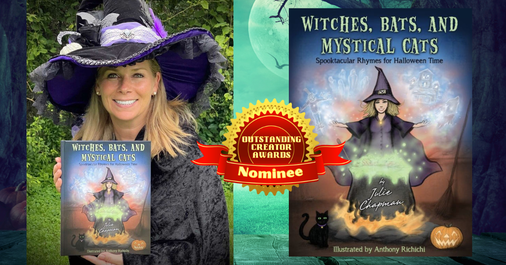
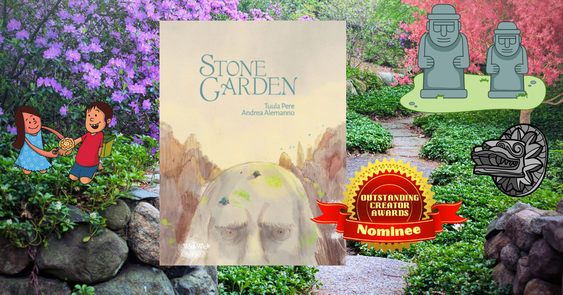
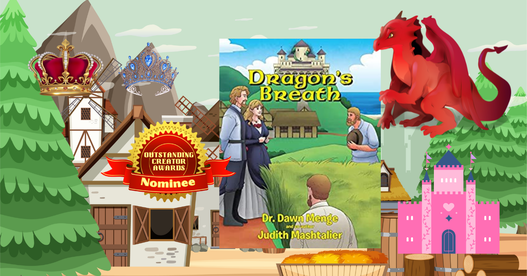
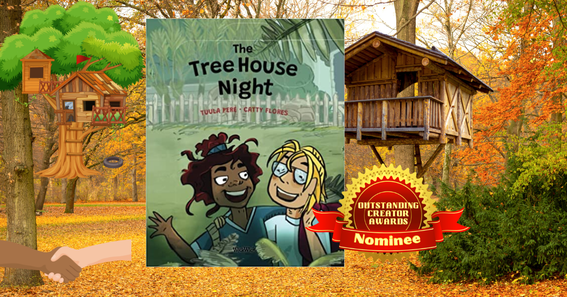
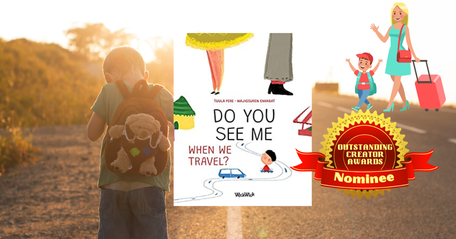

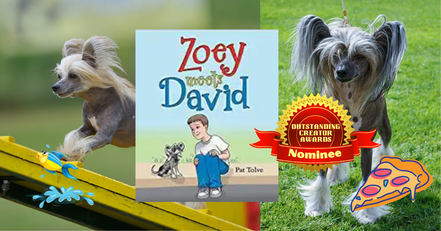
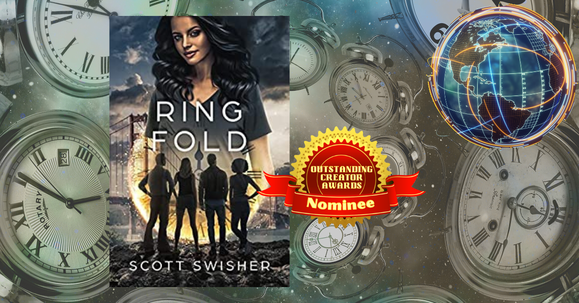
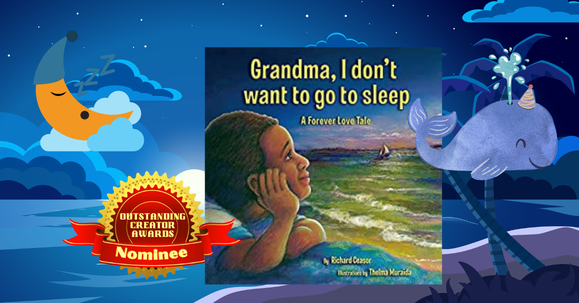
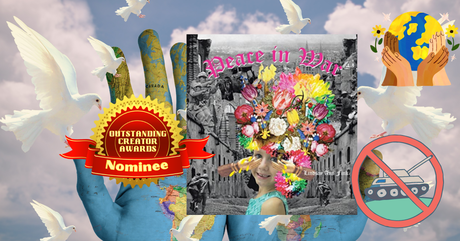
 RSS Feed
RSS Feed